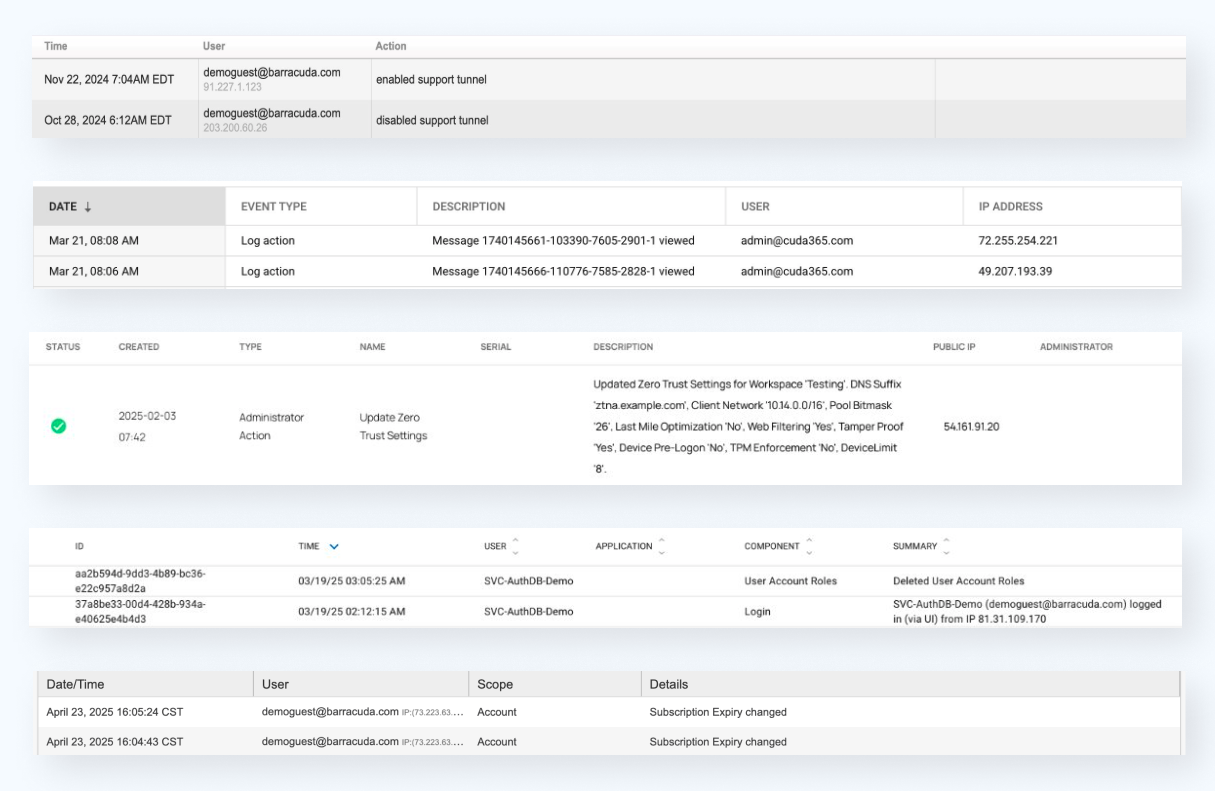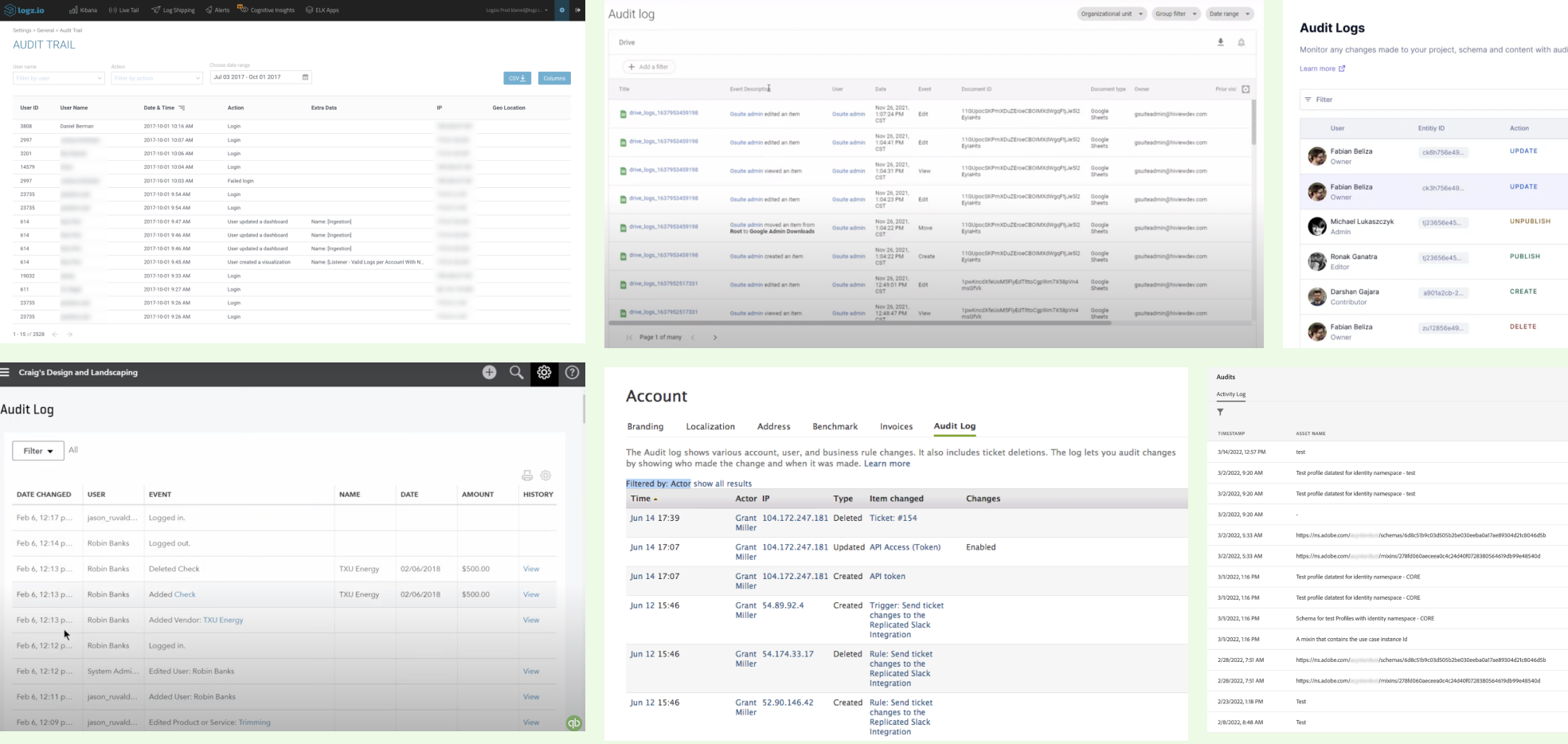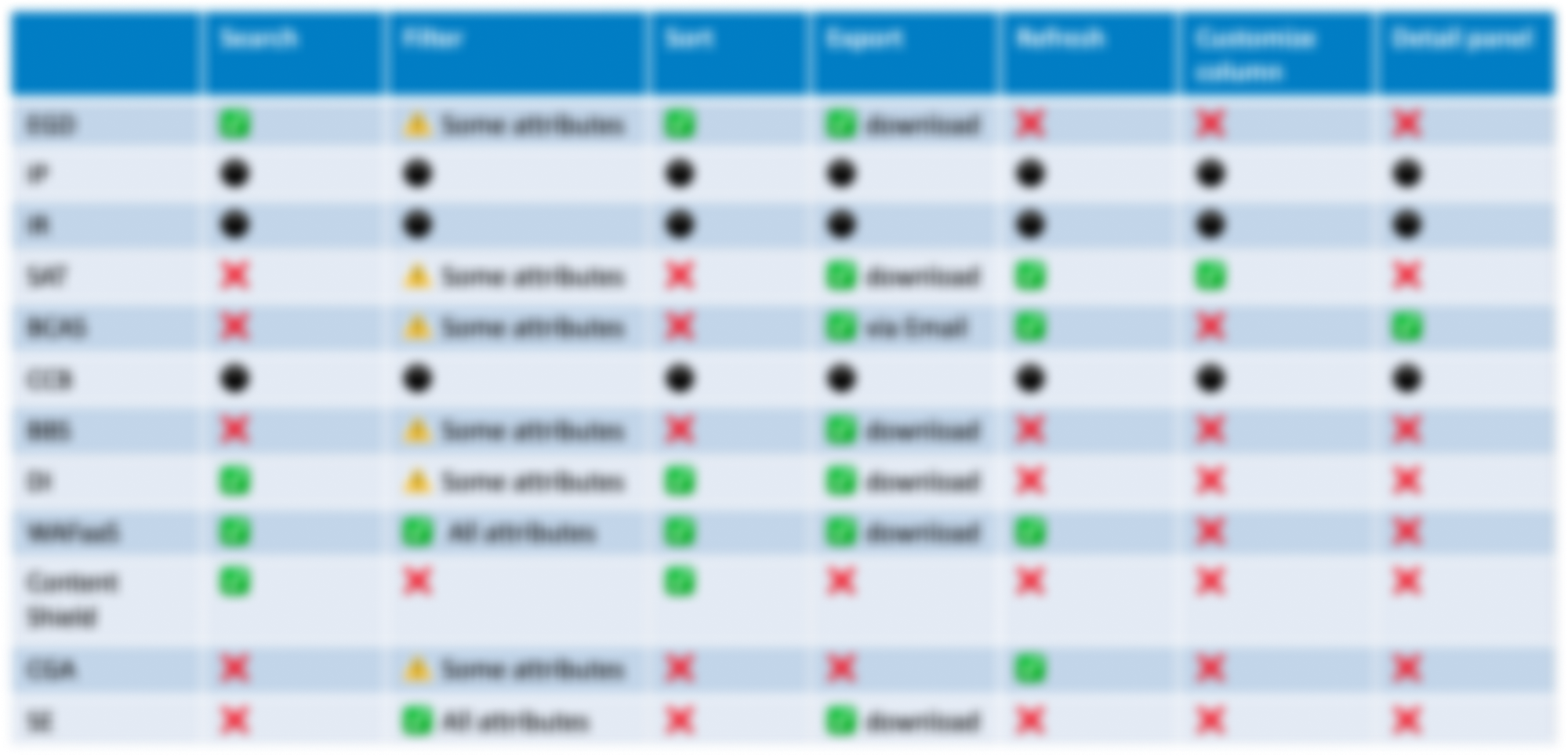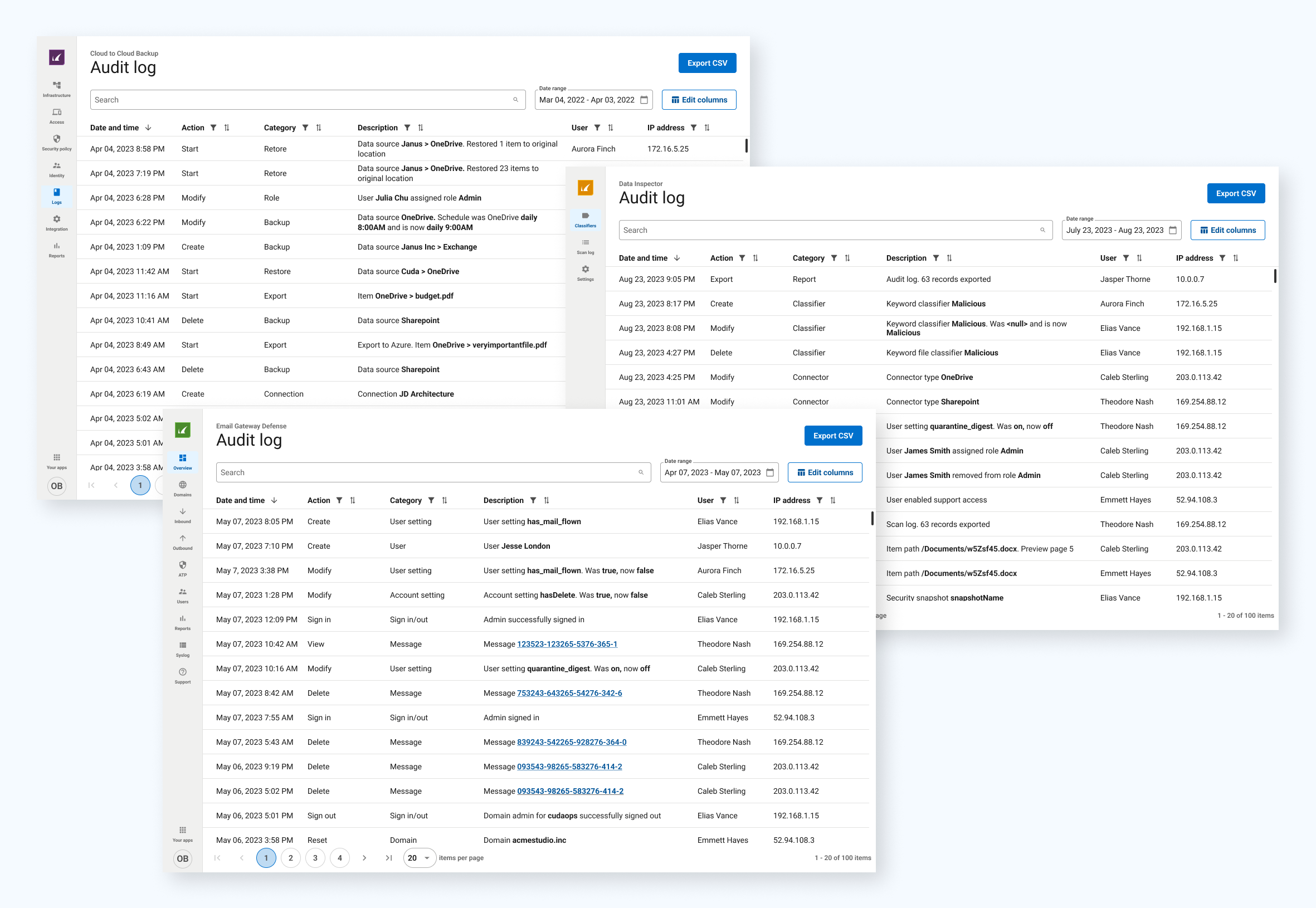Barracuda - Unified audit log
Designing a universal audit log pattern to be adopted across the entire product suite
Barracuda is a B2B SaaS company offering a comprehensive product suite focused on protecting organizations from cyber threats. Through 20 years of development and various acquisitions, Barracuda’s portfolio consists of over 10+ products, ranging from email protection, data protection, network security, application security, and more.
I led the design and strategy for a consistent audit log experience across all Barracuda products. I collaborated with product teams across the company to develop a flexible pattern that will be adopted across the entire portfolio.
Role— UX Designer
Collaborators— 4 Product Managers, 1 Design System Lead
Timeline— 12 months
Siloed product teams = inconsistent user experience.
What are some opportunities to create a more cohesive experience across Barracuda products?
THE PROBLEM
Barracuda offers a large suite of products, each owned by a different product team. As teams continue to grow the product, common features, such as audit logs, start to diverge in appearance and functionality.
I uncovered that the Barracuda audit log experience is inconsistent because:
1 — Audit logs within different products offer a different set of feature
2— Audit logs within different products use a different data pattern
Example of search and filter features for different audit logs within Barracuda. There is an inconsistent set of features offered, and the interaction pattern is different for each product.
Example of how events are logged for different products within Barracuda. There is an inconsistency in the data pattern, and different attributes are used.
Understanding the use case
I talked to various success engineers and PMs to further understand the scenarios where audit logs are used. Our target user, IT admins, need to track changes made to their products by different users, so that they can:
Troubleshoot system issues or security breaches by looking at a timeline of events/changes that could have affected the system
Report for compliance regulations to ensure that their organization reaches security benchmarks
MY PROCESS—
Discovery and secondary research
What are the industry standards for audit logs?
Audit logs are a common feature amongst B2B products. Because the tool is used by IT admins to complete the same type of task, I don’t want my designs to stray too far from the interfaces users are used to. I conducted a competitive analysis to understand what user expectations might be for an audit log. I looked at how data is displayed, common features, and common UI elements used.
What is the current state of our products?
My goal is to design a scalable pattern that addresses the needs of all Barracuda products. I conducted a UX audit of the existing audit logs offered in Barracuda products. I looked at the set of features available, the interactions for these features, and how the data is structured. This investigation informed the requirements that guided my designs.
Competitive analysis of B2B audit logs
Audit of features and interaction of all Barraucda products. I have blurred the details for confidentiality.
Contributing to the design system
Tables make up a large part of the audit log design. As part of this project, I worked closely with the design system lead to create components for table header and table cells, which were added to the design system. I assisted with the component design and documentation. The components were utilized by other teams in their implementation of tables, which accelerated their development efficiency.
I contributed Table Header and Table Header components to the company design system
A universal audit log pattern that covers use cases across all Barracuda products. The pattern was be component-ized as part of the design system so that future iterations remain consistent across products.
THE SOLUTION
Standardized data structure
I created a standard data pattern for audit log events. This pattern breaks down and logically organizes the attributes of an event, making it flexible and easily adoptable for multiple use cases.
Flexible filtering and sorting
Because some product teams have limited search functionality, I created a flexible filtering mechanism that allows users to find events easily.
By splitting events into <Action> and <Category>, users can now look for all events relating to an action (create, delete, etc) or a object (setting, message, etc).
Why was solving this problem important?
BUSINESS IMPACT
1— Consistent user experience
A more consistent experience across the product portfolio results in a better overall user experience
Easier transition between products
Reduced error and frustration
Stronger brand recognition
2— Reduce the user learning curve
Consistency means users don't have to spend mental energy figuring out how different products work. They can leverage their existing knowledge from one product to another, making interactions more intuitive and efficient.
3— Improve development efficiency
Currently, product teams recreate the same thing from scratch. With a consistent pattern, teams will be able to use common components, saving development time and resources.
The largest hurdle is convincing various product teams to prioritize this on their roadmaps. I was actively socializing my design and gaining support from product teams. I was also working with the design system team on componentizing the design so that the pattern remains consistent and future changes are applied from a central place.
However, due to a change in priorities from the leadership team, teams are holding off on pursuing this in favor of higher-priority initiatives.
NEXT STEPS—
There is more to the job than just design
This experience underscored the importance of growing the soft skills of a UX designer, such as advocating for my designs and convincing stakeholders that the problem at hand is worth solving. By working across multiple product teams, I learned valuable lessons in building strong relationships with collaborators and being adaptable to each team.
Imagining design beyond a single product
By digging into this problem space, I learned the importance of considering the entire customer experience. Currently, Barracuda’s org structure causes teams to focus on perfecting a specific product or feature, but teams end up ignoring customer touchpoints outside of their projects. This leads to fragmented and frustrating experiences. In the case of audit logs, each product team has developed its variation in silos, but the customer experience breaks as customers consider the entire suite.
Along with the rest of the UX team, I am actively working hard to break the siloed structure of Barracuda’s product teams and advocating for teams to consider the broader customer journey.









